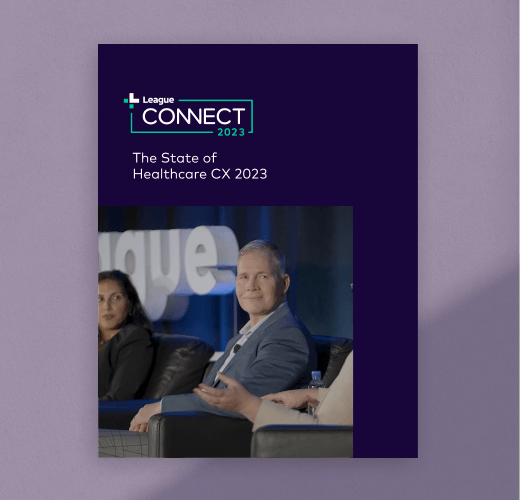Summary
- The collaboration between Google Cloud, Highmark Health, and League aims to personalize and simplify healthcare via secure, interoperable, and scalable digital infrastructure.
- AI/ML capabilities in the digital health platforms enable personalized journeys, potentially improving health outcomes and reducing costs.
- Strategic partnerships are often more efficient for digital transformation than building in-house solutions. Executives must prioritize partners that offer speed, flexibility, and long-term innovation capabilities.
Combining Google Cloud’s cutting-edge infrastructure with League’s consumer experience (CX) platform enabled Highmark Health to create a next-generation digital front door that transformed how the plan engages with members through their entire health journey. The new collaboration, in fact, illustrates what Amy Waldron, Global Leader for Health Plan Solutions at Google Cloud, describes as a shared vision for more personalized health experiences at scale.

One of the great outcomes of this partnership has been coming together to build a solution that meets the needs of today and is well-equipped to take on the innovation and challenges of tomorrow.
AMY WALDRON
Global Leader for Health Plan Solutions, Google Cloud
I interviewed Waldron about the technological underpinnings necessary to achieve the organization’s shared vision and the three key considerations health plan and health systems should take into account when deciding whether to build proprietary digital health solutions, buy them from vendors or forge novel healthcare partnerships that accelerate innovation and speed-to-value.
Q: Why is it so critical for executives to be building strategies to transform consumer experiences right now?
A: Today’s consumers have a tremendous number of choices and the landscape is growing increasingly competitive. What leaders need to be thinking about is how am I building trust with a consumer? How am I adding value? How am I convenient? Because at the end of the day, the choices you make in your consumer engagement strategy will make the difference between who’s in business today and who’s in business tomorrow. Consumer preferences matter. The big question executives often have as they’re thinking about their digital transformation strategies is: Do I build, buy or partner for CX transformation?
Q: In the new partnership, Google Cloud, League and Highmark Health joined forces to enact a shared vision to transform member experiences. What is that shared vision?
A: Google Cloud, Highmark Health and League came together to redefine the healthcare experience. We wanted to take something that was fragmented and complex and simplify it so people welcome the relationship they have with healthcare. In order to do that, care has to both add value and be easily integrated into their daily lives.
Q: What are the various technology components the organizations bring together to enable that shared vision?
A: The technology to create this digital healthcare personalization consists of three components. First is the security required by the healthcare industry. Second, you need the compute power to drive personalization at scale. Third — and probably the most magical component — is interoperability. A tremendous amount of data exists on each and every one of us in the healthcare system, and more and more is being created with new digital devices and point solutions coming to bear. The interoperability of that data is critical to driving personalization.
Q: Artificial intelligence and machine learning are also critical components. What role do those models play?
A: The ability to tap into AI and ML models enables League to create personalized journeys that are actionable for individuals and relevant to their personal interests. There is a balance between a person’s health needs and personal needs. The benefit of integrating healthcare into people’s daily lives is that you increase engagement, which is necessary for supporting healthier individuals and improving health outcomes. Personalizing user journeys will increase engagement and that will lead us down the path of improved outcomes and reduced costs that the healthcare system so badly needs.

Q: Coming back to the build vs. buy vs. partner consideration you mentioned earlier, how has the nature of that decision changed in the age of digital transformation?
A: In the past, most C-suite leaders wanted to build and own everything. The challenge we have today is that the healthcare ecosystem is moving so fast that companies have to make decisions. When you think about speed-to-value and when you think about your organization’s core competencies that you actually want to own and invest in, you have to take a step back and think through who are the optimal partners in the ecosystem. With Highmark Health, Google Cloud and League it was perfect because we all had an endpoint we wanted to achieve with regard to transforming the user experience. Highmark Health has its Living Health strategy. Google Cloud brings our transformative healthcare platform that unlocks the value of data and drives speed-to-customization at scale. Then League comes in with a very specific, I would say, healthy obsession with the consumer experience to personalize, customize, and drive value.
Q: What should executives be thinking about now to proceed with digital transformation and position the enterprise for success?
A: As organizations are working to establish a strategy for digital transformation, there are three key considerations: the power of the platform they’re investing in, the speed to market that they can achieve through partnership, and how long-term partners can help them sustain innovation for the future.

State of Healthcare CX 2023
Read top takeaways and key insights from healthcare’s premier CX transformation event.
